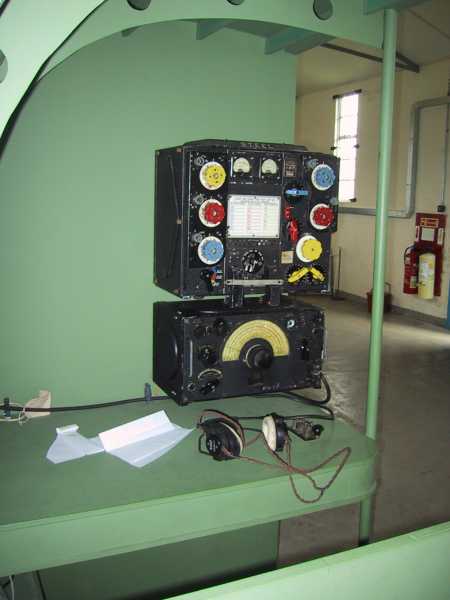
This impressive airborne radar was described at the meeting. Photo courtesy of the APSS website.
Our president introduced us to Bob Thomson who is a volunteer with the Aviation Preservation Society of Scotland (APSS) based at the Museum of Flight at East Fortune. Having a keen interest in aircraft he joined APSS after retiring to be more closely involved with aircraft. On discovering his electronics background, his skills were directed to good use with the electronics associated with aviation both air and ground based. As the LRS is a technical society the talk favoured the electronics and communications aspect of the APSS collection. We were presented with a series of images with a description of the exhibit and if it had any local connection. This started with a model of the Drone Hill Chain Home (wavelength 15 – 10m) WWII radar, today only the foundations exist and the area is a caravan site. The theme of radar continued with modules from the German Freya (wavelength 1.8 – 2.5m) from the same time period. A mock up of a Lancaster fuselage showed the mounting of an H2S scanner (wavelength 0.03m). Another wartime development was illustrated by a type 7 100kW (wavelength 1.5m) pulse transmitter cabinet. Next was a collection of Ferranti air borne radars and test rigs. These had been used in the Lightning and Buccaneer aircraft. This aspect of the presentation drew a lot of attention from the audience many of whom worked for Ferranti and were well acquainted them. Ferranti had its own aircraft which were used to develop and flight test their radars. Another exhibit from the Ferranti stable was the laser ranger and marked target seeker showing the combination of electronics and precision engineering which would have been mounted in a Jaguar. The communications side started with a mock up of a Lancaster’s radio operators position displaying the famous R1155 and T1154 combination. The key being connected to a sounder to encourage visitors to experiment with morse code. There were other communications and specialised avionics units displayed. These were in their housings that would be mounted in the aircraft. We were shown how moving map displays were made long before GPS had been invented. The formal part of the meeting closed with our usual thanks to Bob for giving us his time and an insight to the valuable work APSS carry out. Finally he reminded us that APSS can be visited during the open hours of the Museum of Flight. It should be noted it is wise to check when APSS is open as their opening hours are limited.
Report by Peter GM4DTH. See also the APSS website.

A replica of the radio operator’s position in the Lancaster bomber with an T1154 transmitter and an R1155 receiver, The receiver is fully functional along with a Morse key and buzzer for people to try out at the museum. Photo courtesy of the APSS website.
